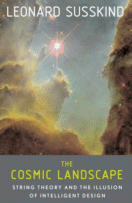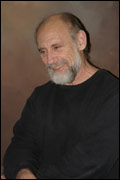Taking the Plunge
by Leonard Susskind
Most physicists hate writing. With few exceptions they find it a necessary time-consuming chore that keeps them away from their equations. I am a bit of an exception in that I have always enjoyed the final phase of a piece of research -- the process of writing it up. But still, the idea of writing a whole book for a non-physics audience seemed beyond me.

|
Being a voracious reader, it's not that I didn't value the ability to write. There are a few great physicists who do it extremely well-Steven Weinberg and Freeman Dyson immediately come to mind. For many years I have admired their ability to express ideas in the written word, but I could not imagine doing it myself.
What provoked me to try my hand at writing for a general public was my experience teaching physics, not to undergraduates or graduate students, but to "grownups." Stanford has a Continuing Studies Program that offers all sorts of courses from Jazz Dance to Bioethics. The program is for ordinary people from the local community around Palo Alto -- usually "old codgers." A few years ago I decided to find out if there was a market for a course on the most exciting topics in modern physics: The response was amazing. Once a week, for several years now, a large lecture hall fills up with folks varying in age from their early forties to their nineties, to hear me expound on the new modern developments in physics: everything from string theory to the Big Bang, and black holes. They come for a semester, but then they come back and back. By now they have organized themselves into an organization -- "The Stanford Quantum Groupies." The whole thing went to my head and I began to think that I might just have some unusual talent at explaining things to laymen. The audience evidently agreed. And of course they said, "You must write a book."
That experience together with the fact that physics and cosmology were undergoing an incredible revolution encouraged me. With more than a little trepidation, I took the plunge -- writing for the public. But once I started I became completely hooked. Having experienced the pleasures of writing I don't think I will stop.
 **Leonard Susskind has made numerous contributions to physics including the
discovery of string theory, the theory of quark confinement and
the technicolor theory. He is currently the Felix Bloch Professor in
theoretical physics at Stanford University, a position he has held since 1978.
Leonard Susskind was born in New York City and now resides in Palo Alto, California.
He is married to Anne Warren and has four children. He has written articles on
physics and string theory for Scientific American,
New Scientist and Physics World. He has also written several books on
physics. His latest book is called The Cosmic Landscape: String Theory and the
Illusion of Intelligent Design (Little, Brown).
**Leonard Susskind has made numerous contributions to physics including the
discovery of string theory, the theory of quark confinement and
the technicolor theory. He is currently the Felix Bloch Professor in
theoretical physics at Stanford University, a position he has held since 1978.
Leonard Susskind was born in New York City and now resides in Palo Alto, California.
He is married to Anne Warren and has four children. He has written articles on
physics and string theory for Scientific American,
New Scientist and Physics World. He has also written several books on
physics. His latest book is called The Cosmic Landscape: String Theory and the
Illusion of Intelligent Design (Little, Brown).
Return to the December 2005 issue of The IWJ.
